The benefit of ornamental grasses in a garden cannot be understated. Not only are they a boon to wildlife, but they also contribute to a low-maintenance garden that showcases seasonal design.
I’ve selected grasses that have a relatively large native range across the U.S. and that overlap primarily in the shortgrass, mixed grass and tallgrass regions of the central U.S. These choices also lean toward the drought-tolerant side, making them perfect for trouble spots in full sun (or shade, as is the case for the last two examples).
Not in the Central Plains? Browse ornamental grasses for more regions of the U.S.
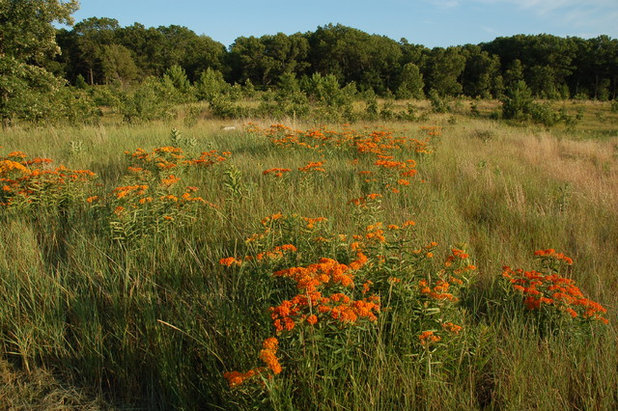
Sparrow Landscaping LLC
Here’s what a healthy dose of grasses can do.
1. Grasses can give almost any size landscape visual cohesion. It’s easier for the eye to follow the beds and lines with grasses in the mix, and their colorful heads pop out with more stunning grace when flowers bloom. Plus, many native flowers evolved with the grasses and can be mutually beneficial above and below the soil line. Use grasses as an interwoven background that forms roughly one-half to two-thirds of a landscape.
2. They help suppress weeds and conserve soil moisture. They do this through their dense foliage and fibrous roots. If you’re into low-maintenance gardens, grasses are key to the design. Use more grasses so you don’t ever have to use wood mulch again.
3. Grasses benefit wildlife. I can’t count the times I’ve seen springtime songbirds tugging on a leaf blade and carrying it off for nesting material, or huddling in winter beneath folded-over mounds during a snowstorm. In addition, many butterflies and moths use native grasses as host plants.
4. They provide immense visual appeal in every season: green in spring for cool-season grasses and sedges, and rich tapestries of ochers, umbers and browns in winter for warm-season grasses. And many boast tantalizing seed heads. So are you ready to experiment with different textures in your garden?
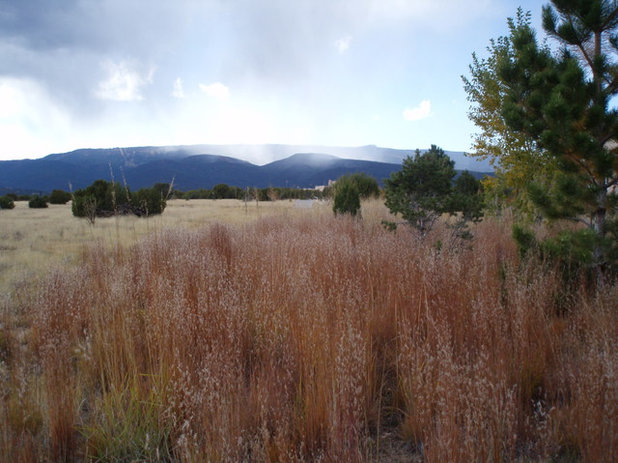
Waterwise Landscapes Incorporated
Little Bluestem(
Schizachyrium scoparium)
You’ll find this shortgrass in the wild in every state but Oregon, California and Nevada.
As a warm-season bunch grass, little bluestem won’t poke up until the heat builds in late spring to early summer. It’s well behaved, with a nice upright form that reaches about 3 feet tall and 1 foot to 2 feet wide. The grass has blue-gray summer foliage and sports tons of glittery fall seed heads and a delightful autumn hue (as seen here). It prefers dry to medium soil in full sun.
See how to grow little bluestem
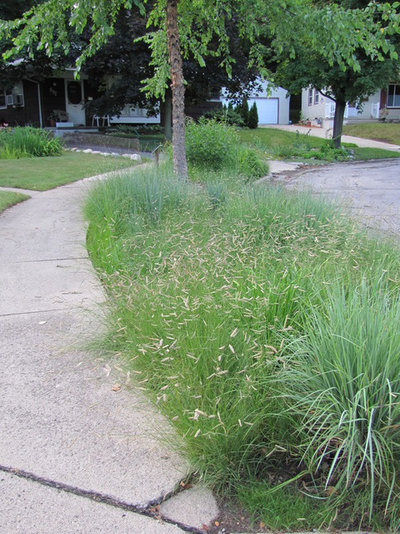
Creating Sustainable Landscapes, LLC
Blue Grama (
Bouteloua gracilis)
Appears in almost every state west of the Mississippi except Oregon and Washington
Got a blazing-hot location with dry soil? Try this native grass that reaches about 1 foot tall while in bloom — and what a bloom. The seed heads look like lush eyelashes no mascara can promise. Try blue grama as a lawn replacement or tuck it toward the front of a border among shorter perennial flowers.
See how to grow blue grama
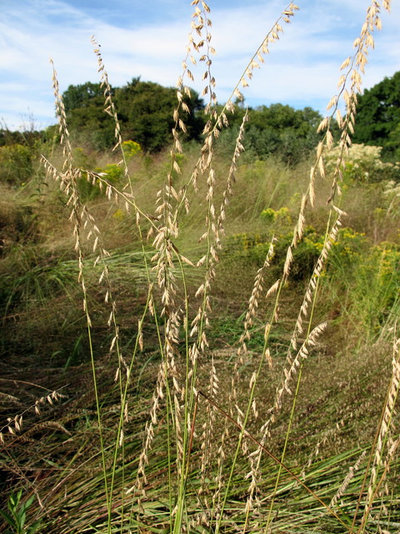 Photo by Kristine PaulusSideoats Grama
Photo by Kristine PaulusSideoats Grama (
Bouteloua curtipendula)
Native across most of the U.S. except the Pacific Northwest, and south through Central America
This is perhaps the most underutilized native grass. It laughs at drought and will reach 2 feet tall while in bloom and 1 foot to 2 feet wide in sunny locations with dry to medium soils. Since it’s a warm-season bunchgrass, sideoats grama won’t spread on you, but you can broadcast plant the ornamental oat-like seeds in bare soil in fall or spring. Five skipper moths use it as a host plant.
See how to grow sideoats grama
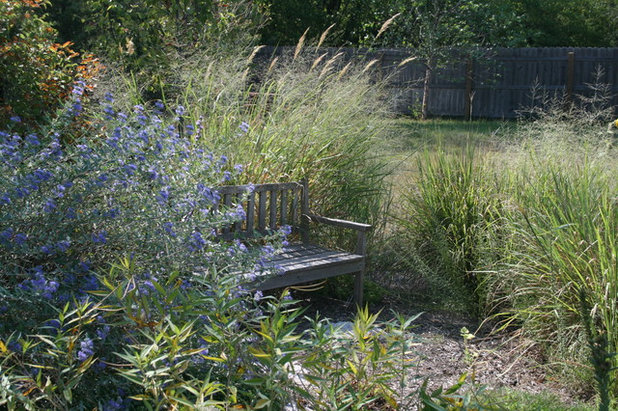
Benjamin Vogt / Monarch Gardens
Indian Grass (
Sorghastrum nutans)
Native from east of the Rockies all the way to the Atlantic Coast
I like to use this tallgrass prairie native as a screen along fences or in open gardens to create an air of mystery and seclusion. Indian grass reaches 6 feet tall while in bloom and about half that without the ornamental seed heads. It’s about 2 to 3 feet wide, provides stunning orange fall color and holds up to heavy winter snows. Grow it in full sun in medium to dry soil.
See how to grow Indian grass
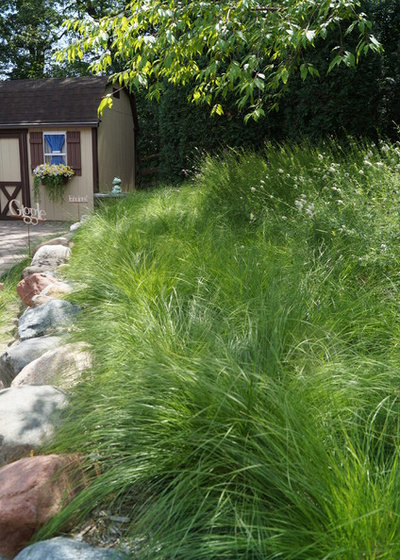
Prairie Restorations, Inc
Prairie Dropseed (
Sporobolus heterolepis)
Native from Oklahoma east to Arkansas and north to Wisconsin, Minnesota and North Dakota
I think all grasses are elegant when sited correctly, but you won’t find a more evocative shortgrass than prairie dropseed. It’s a fan of dry soil in hot sun, though it does well in slightly moist soil, too. Fragrant seeds that smell like popcorn precede stupendous fall color. I suggest buying bigger potted plants, since it’s somewhat slow to reach its mature size of 2 to 3 feet from seed.
See how to grow prairie dropseed
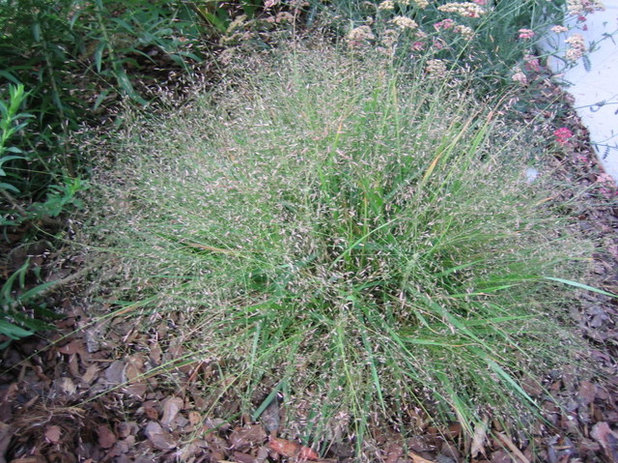 Photo by Linda N.Purple Lovegrass
Photo by Linda N.Purple Lovegrass (
Eragrostis spectabilis)
Native from Arizona north to Wyoming and all the way east
This is a grass you’ll want to buy 20 of, because the ornamental flowers create a smoky purple cloud that floats just above the ground when planted en masse. Lovegrass reaches 1 foot to 2 feet tall, blooms in mid- to late summer and prefers dry, hot soil, especially sand or gravel. It’s tolerant of salt, making it great for hell strips. The fall color is a bronze or red that won’t disappoint.
See how to grow purple lovegrass
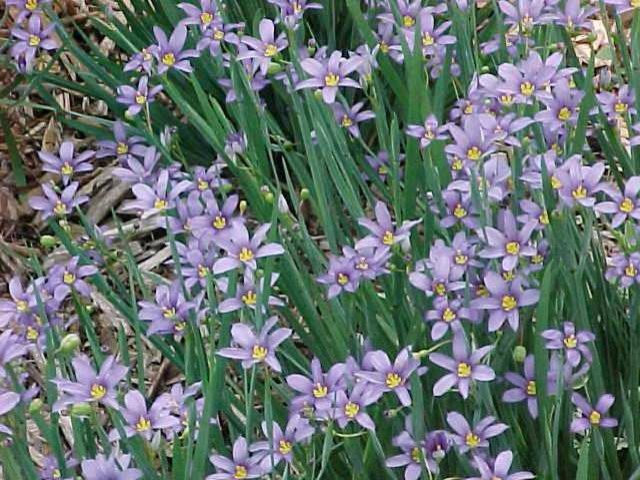
Missouri Botanical Garden
Prairie Blue-Eyed Grass (
Sisyrinchium campestre)
Native from South Dakota to Wisconsin south into Louisiana and eastern Texas
The common name suggests it’s a grass, but it’s related to iris. Prairie blue-eyed grass is about 6 inches tall and needs full sun and well-drained soil that doesn’t dry out. The cheery blooms flower in late spring and are a boon to early-season pollinators. In ideal soil it may slowly naturalize, but it isn’t aggressive at all.
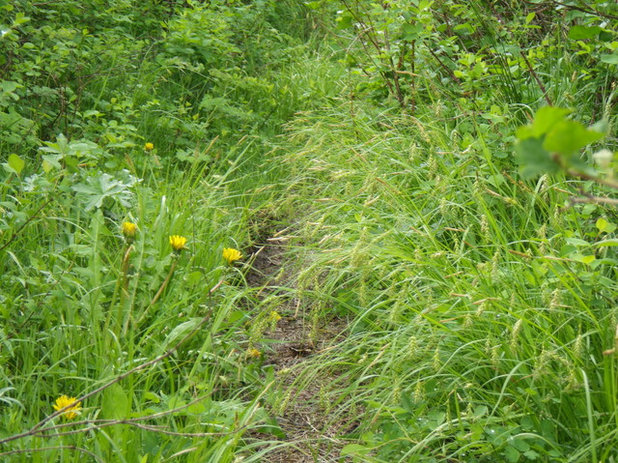 Photo by Matt Lavin
Photo by Matt Lavin
Long-Beaked Sedge (
Carex sprengelii)
Native from Montana south to Wyoming and then east into Pennsylvania and north up into New England
This is a sedge, not a grass, but most sedges look like grass. Long-beaked sedge is super adaptable, growing in full sun to shade and in moist to dry soil (more sun means more moisture needed). At about 2 feet tall and 1 foot wide, it is a nice clumping alternative to the more traditional grasses we see for sale. Try this easy-to-grow plant alone in masses or among shade-blooming natives like calico aster (
Symphyotrichum lateriflorum) or zigzag goldenrod (
Solidago flexicaulis).
See how to grow long-beaked sedge
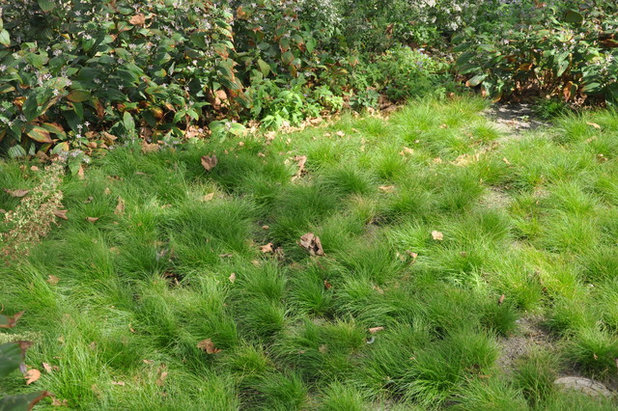
J Biochemist
Bristleleaf Sedge (
Carex eburnea)
Native from Montana south to Nebraska and east into Arkansas and scattered points to the east
Sedges are missing in too many landscape designs, but that’s changing in the garden world — they are just so adaptable and easy to care for. Take bristleleaf sedge, which makes a lovely ground cover in dry shade. Its fluffy mounds are pleasing to touch and never reach more than about 6 inches tall. Tuck it in among pavers or in rock walls and let it be.
See how to grow bristleleaf sedge





